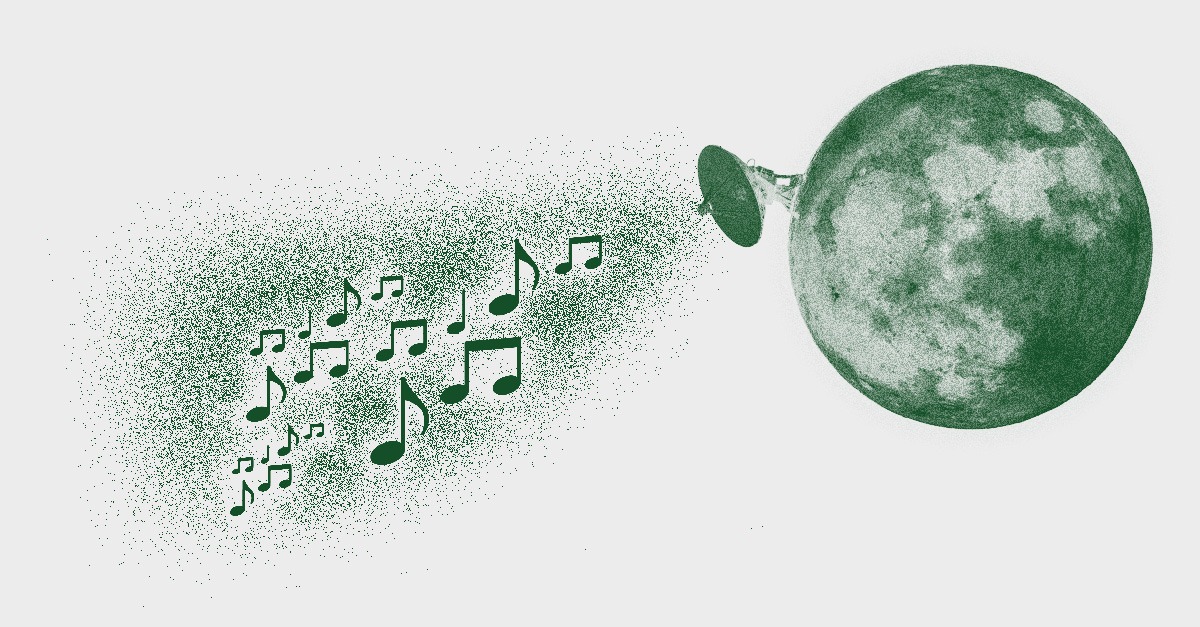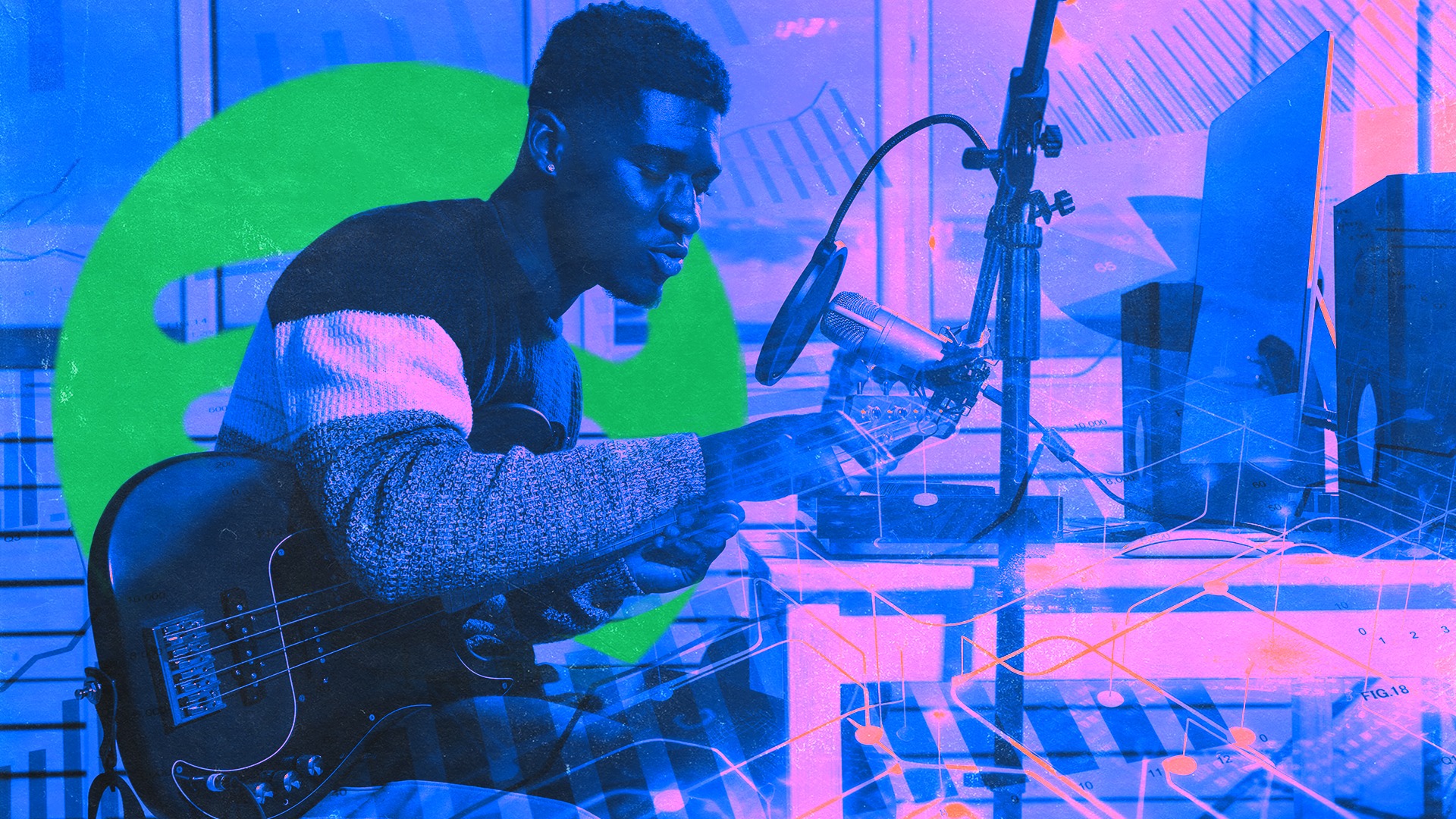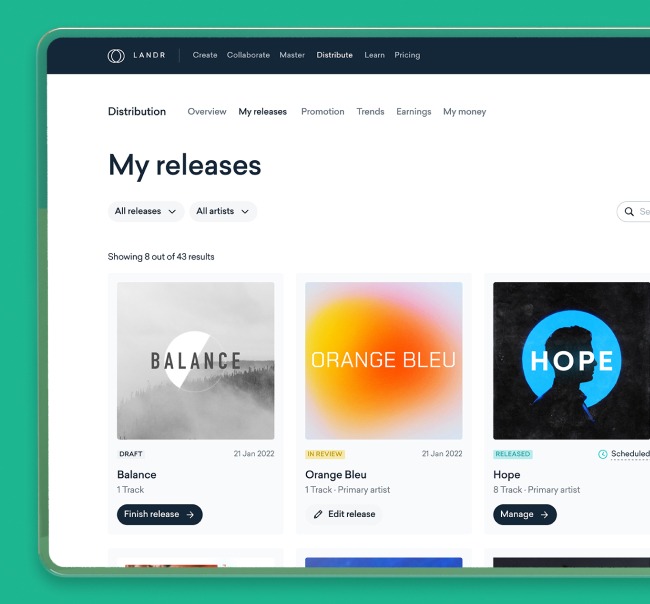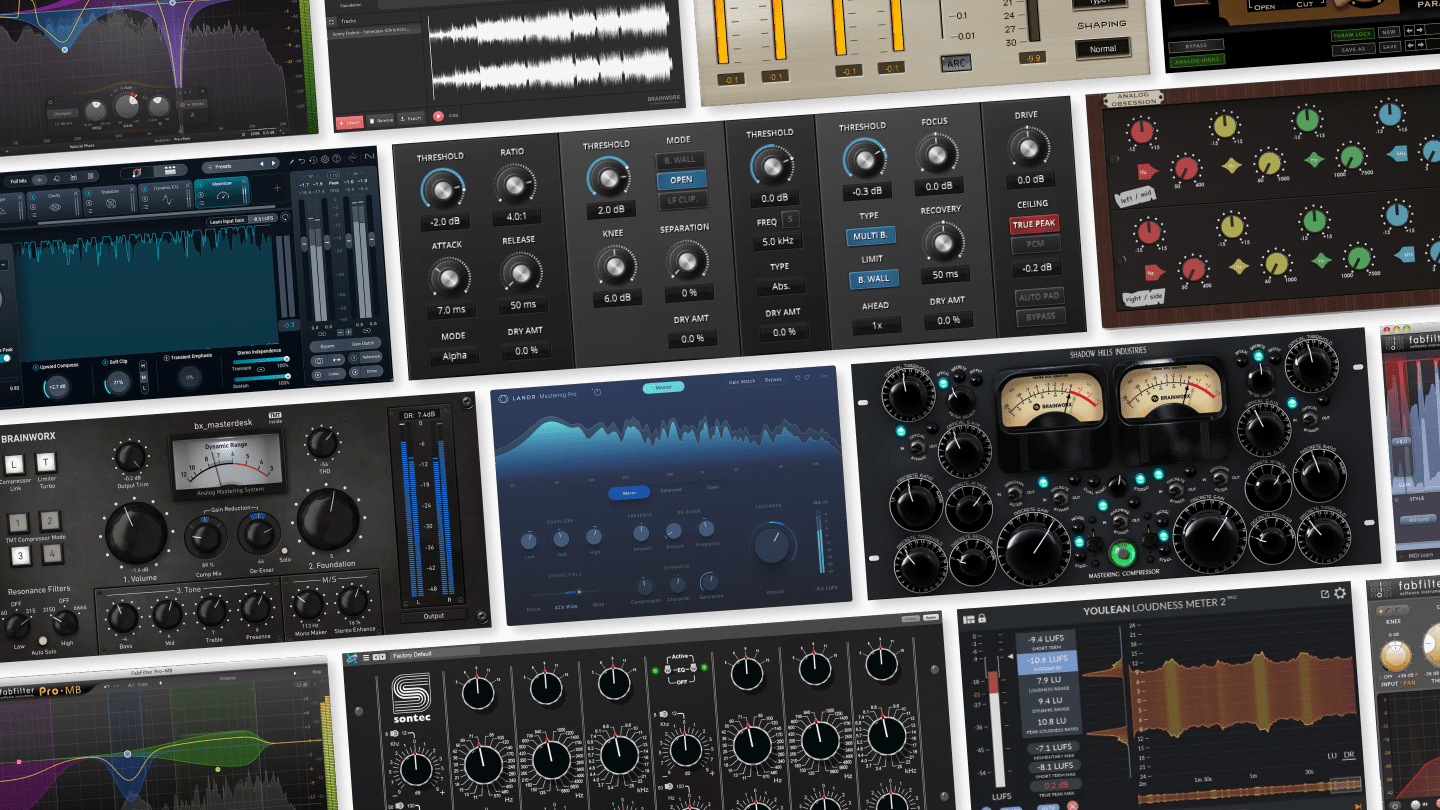
Social Media Marketing for Musicians: 10 Tips for Getting It Right
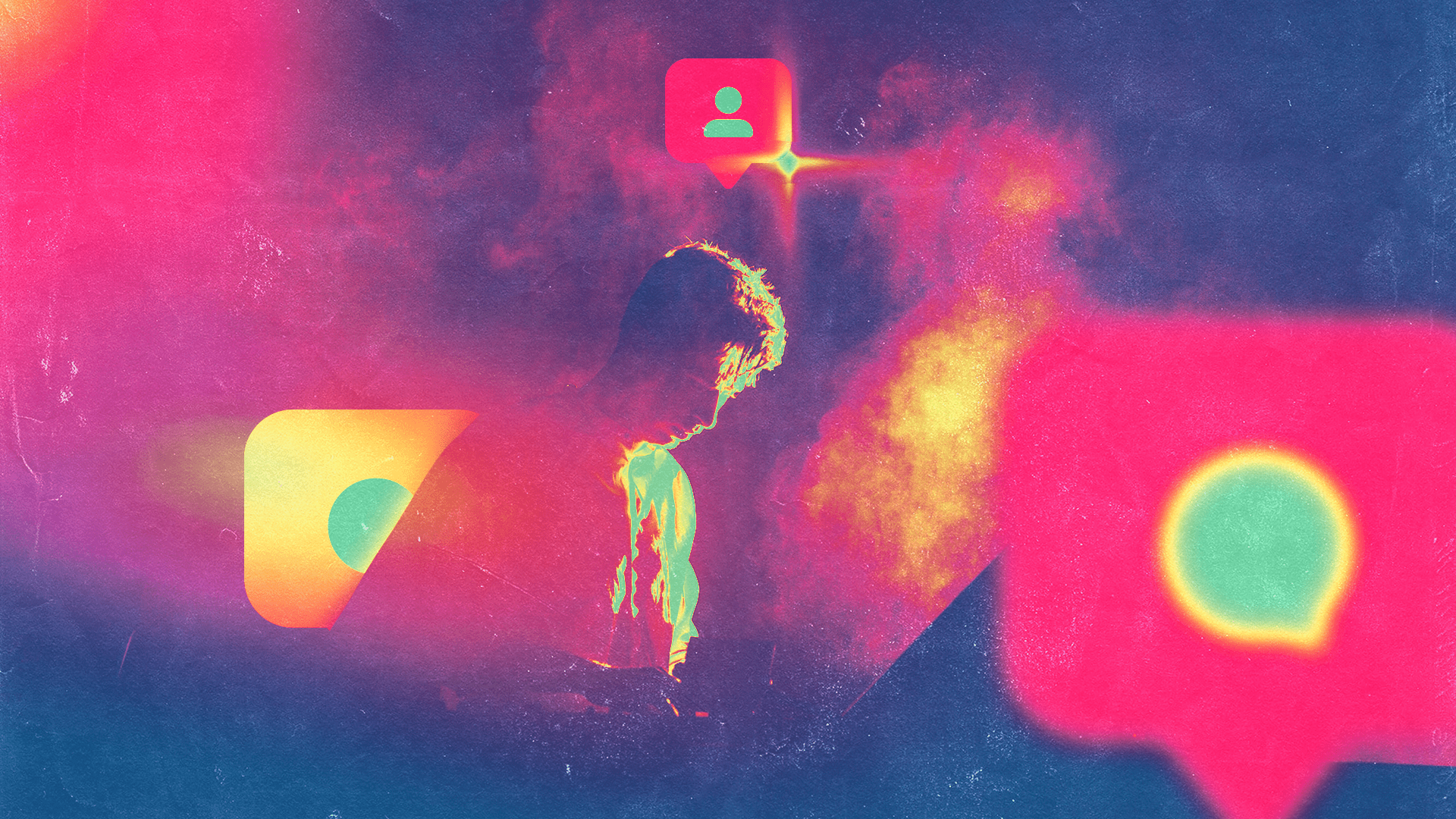
Social media can be one of the most powerful tools for growing an audience as a musician.
It can also, however, be a pretty tough nut to crack.
How do you stand out and get noticed, especially when countless other musicians are trying to accomplish the same thing?
While there’s no universal magic trick going viral, our simple guide offers 10 tips that will be essential in your journey.
Ready? Let’s dive in.
Social media marketing for musicians
1. Take social media seriously
We’re sure you’ve heard plenty of times that social media is essential for getting your music out there.
In fact, many of the basic reasons (it’s a promotional tool, it helps you get gigs and other opportunities, etc.) are probably things you already know on an intuitive level.
However, there are some basics that we think are worth emphasizing.
You should keep your fundamental social media bases covered by:
- Having a profile for your music on all major platforms
- Using up-to-date, eye-catching profile and header images
- Writing bios that capture your personality as an artist
- Using link-in-bio tools to connect to the rest of your online presence
- Clearly communicating gig dates, release dates, and other key info
- Engage and interact genuinely with your followers
In addition to things like these, there are some more underrated points that are important to bear in mind.
First, social media not only helps you build an audience, it also connects you with other artists. This can lead to inspiration, collaboration, and opportunities you may not expect.
Second, it can function as a creative medium with all kinds of potential for different ways of presenting yourself and the music you create. More on that later.
Third, it can help you stay motivated and incentivized to consistently build community, engage with that community, and stay on top of your craft.
That is, as long as you approach it the right way.
2. But not too seriously
All of that being said, we’re going to offer a bit of nuance that can help you develop a more balanced outlook on this set of tools.
Most importantly, while it can often feel like it sometimes, social media is not the center of your life as a musician.
It’s also not the only thing that will contribute to your success.
In addition to the obvious necessity of consistently making and releasing good music, you should also make it one of your highest priorities to book gigs.
Naturally, having a solid social media presence is pretty important for getting gigs these days, but so is building real-life connections and relationships in your local scene.
If you can fill a room at a local venue, this is far more valuable than getting a spike in engagement on social media that’s spread out across a bunch of different cities.
If you live somewhere that doesn’t have a very active scene for the kind of music you make, then the social media tips we explore might be especially useful for you.
Meanwhile, if the time you invest into social media begins to outweigh the time you invest in your craft as a musician, it may be necessary to tip the scales a bit and maintain some balance.
3. Know your audience
One of the key aspects of using social media is understanding your audience. But what exactly does that mean?
You can certainly use analytics on social media and streaming platforms to understand your audience in terms of age, gender, region, and other metrics.
And while these things can be highly useful and important, we think it’s also wise to understand your audience on a more human, cultural level.
In other words, your audience is quite simply the music community you’re a part of (or want to be a part of).
The ideal listener is someone who genuinely enjoys listening to your music and remains engaged with you as an artist in the long term.
And the best way to find and attract these people is to be as plugged into your scene as possible (whether that’s online, in real life, or both).
For many musicians, this process happens unconsciously — you simply make the kind of music you love and connect with people naturally over time.
But social media can be used as a tool for doing this in a more deliberate and intentional way.
It can teach you all kinds of things when it comes to the cultural characteristics of your listeners and potential listeners.
Who are they following? What kinds of posts do they engage with the most? What’s their sense of humor like? What non-music-related aspects of culture are they into?
Immerse yourself in your extended music community, pay attention to the details, and allow those details to help shape how you create your work and present yourself.
Speaking of which…
4. Know yourself
Knowing how to present yourself and your music is one of the most challenging parts of being a musician.
For some people, it can be inspiring and motivating to develop a unique and consistent brand that resonates with people.
Others may be a bit uncomfortable with the idea of “branding,” and it can feel a bit artificial to spend so much time and energy on presentation rather than the music itself.
Wherever you fall on this spectrum, one thing remains true — the image that comes with your music does matter, and it’s possible to approach it with authenticity, creativity, and care.
What kinds of visual art, graphic design, and photography feel most aligned with the kind of music you like?
How would you describe the mood and feel of the music you create?
If you write lyrics, what themes do you feel most drawn toward?
What unique aspects of your personality can you authentically channel that into your music and your online presence?
Questions like these can get the creative juices flowing when it comes to building a distinctive and consistent identity across all channels.
From there, social media will be your most powerful tool in conveying that identity to your audience and allowing it to elevate your music.
5. Stay consistent
So, how frequently should you post on social media anyway?
You might find some resources out there that make pretty specific recommendations, like 2–4 posts on X and 2–5 Instagram stories per day.
However, we think it’s a bit more dynamic than that.
For one thing, you don’t want to spam your followers with a large quantity of forgettable posts.
Not to mention the fact that getting too caught up in high quotas for post quantity is a pretty good recipe for wearing yourself out and taking time away from your music.
All of that being said, consistency does matter.
If you post twice in the span of a few days and then go a week or two without posting anything, this is unlikely to keep people engaged.
But when it comes to post frequency, the exact sweet spot may just take some time and experimentation to figure out.
Identify a few successful musicians in your genre and scene (especially ones with plenty of followers who actively engage with them online) and pay attention to how frequently they post.
You might be surprised by how much you can learn from observation alone.
6. Make the most of short-form video
From TikTok to Shorts and Reels, it’s pretty safe to say that short-form video dominates social media these days.
So, naturally, it’s a good idea to make use of it as both a promotional and creative tool when it comes to your music.
There are tons of possibilities here — music videos, audio snippets from your releases paired with visuals, clips of you talking about your process in the studio, recordings of you performing live, etc.
But one thing that many artists might forget to consider is that not all short video platforms are exactly the same.
TikToks, Shorts, and Reels each often tend towards their own particular characteristics and overall styles.
On top of this, different topics or types of content might be trending at different times on each platform.
It’s therefore not the best idea to simply post the same exact content to all of them at once.
Instead, when you observe the short-form video content in your realm of music that gets strong engagement, be sure to apply those observations to your own stuff on that same platform.
Being platform-specific about your video posts will improve your chances of engaging your audience as effectively as possible.
7. Weave social media and streaming together
Does streaming count as social media?
We think it does — streaming platforms are places where people can engage and connect with one another through the sharing of music.
More importantly, however, streaming is deeply intertwined with how musician’s use social media in general.
Your streaming presence and social media presence should link to one another so that streaming listeners can find you on social media and social media followers can find your music.
This is especially important during promotional periods for new releases.
When you put out new music, you should encourage your social media followers to listen to your music, like your songs, and add your songs to playlists.
That early listening traffic is crucial for helping to boost the visibility of your music to streaming algorithms.
It can even improve the chances of success for your Spotify playlist pitches.
If you haven’t yet gotten your music on Spotify, we highly recommend making it happen with a good distributor.
8. Join forces through tagging and collab posts
Once again, developing a sense of connection with your scene and the wider music community is essential.
Whenever it’s relevant to your posts, don’t forget to tag other profiles. This includes artists, labels, promotors, brands, venues, and more.
It’s one of the easiest ways to extend the reach and visibility of your own profile to people who don’t yet follow you.
Meanwhile, if you’ve collaborated with someone, landed a partnership, or are otherwise working with another individual or organization, this is where collab posts on Instagram come in handy.
Like tagging, this is great for expanding your reach. It also can help add some legitimacy to your online presence by building the right connections and associations in a public way.
9. Consider sponsored content
There’s probably no point sugar-coating it — artists who can put a lot of money into sponsored content on social media will have an advertising advantage over those who can’t.
However, if this currently isn’t an option for you, don’t be discouraged.
There are countless people out there who successfully leverage social media to build a following for their music without having ad cash on tap.
If you fall somewhere in the middle, it’s worth keeping in mind that even modest ad campaigns can be effective at gathering new followers and listeners.
This is especially true when promoting new releases.
Facebook and Instagram ad campaigns can be built based on whatever budget you’re able to piece together, and you can target potential fans through various demographic factors.
This includes targeting people in specific regions and people who listen to artists that are similar to you.
Effective targeting is all about attracting the right people to your music, which can translate into more long-term fans.
10. Take breaks (yes, you can do that)
You don’t see this tip going around very often — probably because everyone emphasizes post consistency and the challenge of competing in everyone’s feeds.
Despite this, however, we think it’s good advice.
As we mentioned before, getting too wrapped up in social media can take precious time and energy away from your creative process.
This is why it’s essential to take planned breaks from social media to focus on your music itself, or even other day-to-day aspects of your life.
This can be a few days, a full week, or even more — it depends on how strong your fanbase is and what your needs are.
If you’re worried about losing momentum, time your breaks after peak promotional phases.
Put out a new release, promote it for a few weeks, and then take a week off socials while the release sinks in and gains you new listeners and followers.
No matter how you approach it, we highly recommend integrating it into your overall strategy.
The personal and creative connection you have with your music is, without a doubt, the most valuable resource you have as an artist.
It can’t be substituted by a high follower count, tons of engagement on social media, or even going viral for a single track.
Social media is a powerful tool and a powerful force. Ultimately, it should complement and strengthen your music, not overshadow it.
Gear guides, tips, tutorials, inspiration and more—delivered weekly.
Keep up with the LANDR Blog.
